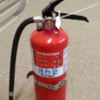The drive wheel slip on my PW diesel locomotives, I even need to push it to get started if I have more than a few cars. So I bought traction tires that are a little smaller than the drivewheels on my locomotives. I am having a difficult time getting them on. After reading a few older threats here.
1. I wonder if it is of any value to use traction tires since the wheels of my diesels do not have a groove in the wheels?
2. If it is ok to use then, then how do I remove the sides of the trucks to more easily get access to the wheels?
Thanks!







